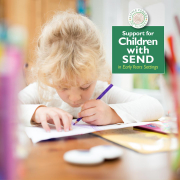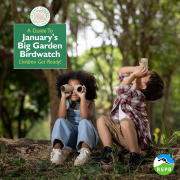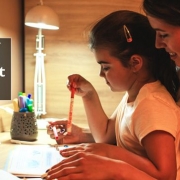Outdoor Safety for Kids — Top Tips
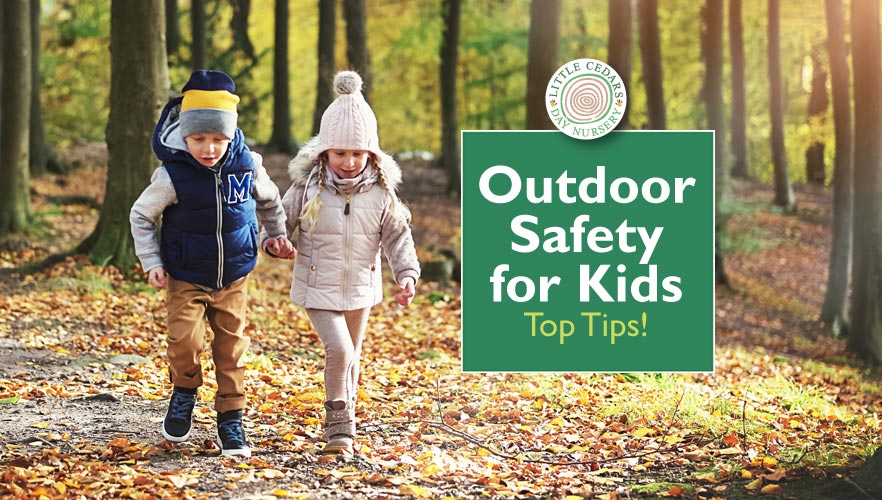
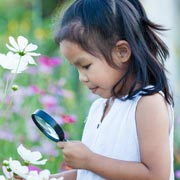 As parents and caregivers, we understand the incredible value of outdoor play in our children’s development. The fresh air, unstructured exploration, sensory-rich experiences, and social interactions contribute significantly to their holistic growth. However, while we encourage outdoor adventures, safety must remain our top priority. With that in mind, this article provides some essential tips and precautions that will help to safeguard children during outdoor play. The suggestions can be used as a checklist, but parents/caregivers should use it only as a starting point and do their own risk assessments.
As parents and caregivers, we understand the incredible value of outdoor play in our children’s development. The fresh air, unstructured exploration, sensory-rich experiences, and social interactions contribute significantly to their holistic growth. However, while we encourage outdoor adventures, safety must remain our top priority. With that in mind, this article provides some essential tips and precautions that will help to safeguard children during outdoor play. The suggestions can be used as a checklist, but parents/caregivers should use it only as a starting point and do their own risk assessments.
Always Keep an Eye Out
Let’s start with the most obvious; while outdoor play is a wonderful way for children to learn and grow, constant supervision is crucial. Be sure to keep a watchful eye on your child, guiding them away from potential hazards and ensuring their safety at all times.
Set Boundaries and Rules
 Boundaries create a sense of security. Ensure boundaries are understood and that play areas have clear markers. Guide children to understand and respect these boundaries to reduce the risk of children wandering away — and potentially becoming lost.
Boundaries create a sense of security. Ensure boundaries are understood and that play areas have clear markers. Guide children to understand and respect these boundaries to reduce the risk of children wandering away — and potentially becoming lost.
Be Mindful of Traffic Risks
The bustling world outside may often involve traffic hazards that demand our utmost attention when children are under our care. To mitigate this risk, play areas are best located away from access to busy streets, ensuring that children are shielded from the dangers of passing vehicles. Drives where vehicles are parked are also best avoided.
Teach Stranger Safety
Outdoor play can bring encounters with unfamiliar faces. Teach your child about stranger danger and the importance of staying close only to trusted adults. Clear guidelines should be established in regard to possible interactions with strangers.
Stay Clear of Water Dangers
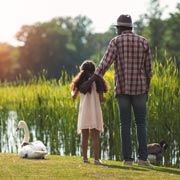 Children are naturally drawn to water, but it can pose significant risks. Ensure that play areas are far from water bodies, and when near any water source, always provide direct and continuous supervision. Even shallow water can be dangerous for little ones.
Children are naturally drawn to water, but it can pose significant risks. Ensure that play areas are far from water bodies, and when near any water source, always provide direct and continuous supervision. Even shallow water can be dangerous for little ones.
Mind the Terrain
Outdoor terrain can be uneven, and young children are prone to trips and falls. Before allowing your child to play, scan the area for potential trip hazards and clear them away. Teach your child to navigate uneven ground carefully.
Climbing Structures & Fall Prevention
 Although they’re young, children want to explore and will naturally want to climb as they get older. It’s therefore important to teach children a safe approach to climbing. This should include emphasising the importance of staying within safe heights to prevent falls, assisting with climbing technique and, of course, risk-assessing what they should and shouldn’t attempt to climb in the first place.
Although they’re young, children want to explore and will naturally want to climb as they get older. It’s therefore important to teach children a safe approach to climbing. This should include emphasising the importance of staying within safe heights to prevent falls, assisting with climbing technique and, of course, risk-assessing what they should and shouldn’t attempt to climb in the first place.
Sharp Objects & Tools
Children are naturally drawn to exploring their surroundings, which includes investigating potentially dangerous items. Therefore thoroughly inspect new play areas to remove sharp objects, tools, or equipment that could harm curious hands.
Beware Choking Hazards
Children’s natural curiosity when exploring may often lead them to want to put objects in their mouths. This can obviously be extremely dangerous, so ensure vigilance at all times. Inspect play areas to remove small items that could pose choking hazards, ensuring a safe space for our little ones to explore.
Flora & Fauna Hazards
 While exploring nature is exciting, it’s essential to be aware of potential dangers. Educate your child about the dangers of poisonous plants and fungi or insects that could harm them. Encourage them not to touch or eat anything unfamiliar.
While exploring nature is exciting, it’s essential to be aware of potential dangers. Educate your child about the dangers of poisonous plants and fungi or insects that could harm them. Encourage them not to touch or eat anything unfamiliar.
Animal Encounters
Nature’s wonders may include encounters with wildlife. While we might cherish these experiences, we should take precautions to ensure outdoor spaces are free from potentially harmful creatures and educate children on respectful interactions with animals.
Hygiene and Sanitation
 Outdoor exploration sometimes involves contact with dirt and mud. Promote hygiene by ensuring handwashing facilities are readily available and teaching children the importance of cleanliness after outdoor play.
Outdoor exploration sometimes involves contact with dirt and mud. Promote hygiene by ensuring handwashing facilities are readily available and teaching children the importance of cleanliness after outdoor play.
Weather-Appropriate Clothing
Proper attire is crucial for outdoor play. Dress your child in weather-appropriate clothing, including hats and sunscreen for sun protection. When the weather becomes colder, layering of clothing will help to keep children warm in comfort.
Be Prepared for Changing Weather
Weather can be unpredictable, so check the forecast before outdoor playtime. Be prepared with a store of sunscreen when it’s sunny and raincoats or extra layers for when it turns cold and rainy. Suspend play during lightning storms or extreme weather conditions. Be mindful of slipping hazards when it’s wet.
Hydration and Breaks
Outdoor play can be physically demanding, so be sure your child stays hydrated. Provide breaks for rest and water to prevent exhaustion.
Allergen Awareness
Some children may have allergies triggered by outdoor elements. If your child is affected, be sure to maintain an allergen-free environment by regularly cleaning and inspecting play areas and educating friends and relatives about allergy management around your child.
Fire Safety Awareness
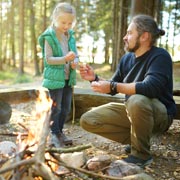 Campfire stories can be delightful and intriguing for children, but we must always prioritise fire safety. If you decide to expose them to it, children must be educated about the potential dangers of fire and always supervised during any fire-related activities. Fostering a responsible understanding around fire safety is paramount.
Campfire stories can be delightful and intriguing for children, but we must always prioritise fire safety. If you decide to expose them to it, children must be educated about the potential dangers of fire and always supervised during any fire-related activities. Fostering a responsible understanding around fire safety is paramount.
Foster a Love for Nature
Encourage your child to appreciate and respect nature. Teach them to observe wildlife from a safe distance and not to disturb animals or their habitats. This helps to keep children and wildlife safe.
In Summary
As parents and caregivers, our priority is the safety and well-being of our children. By using these essential starting points, you can help ensure that your child’s outdoor play is not only fun and educational but also safe and secure. At Little Cedars Nursery, Streatham, we share your commitment to providing a safe environment for outdoor exploration. Our dedicated staff, thoughtfully designed play areas, and safety-conscious practices further enhance the outdoor experiences of children under our care. Together, therefore, we can create enduring memories of outdoor adventures that are as secure as they are captivating, enriching and fun for our little ones.
Little Cedars Nursery: High-Quality Childcare in Streatham
A Childcare Nursery & Preschool in Streatham, near Furzedown, Tooting, Balham, Norbury & Colliers Wood

 If you are looking for the best nurseries or preschools in the Streatham area, do consider Little Cedars. We offer an outstanding weekday childcare service for babies, toddlers, and preschoolers under five. We’re also conveniently close to those living or working in Streatham Hill, Streatham Park, Streatham Common, Furzedown, Tooting, Tooting Bec, Tooting Broadway, Tooting Common, Balham, Norbury and Colliers Wood.
If you are looking for the best nurseries or preschools in the Streatham area, do consider Little Cedars. We offer an outstanding weekday childcare service for babies, toddlers, and preschoolers under five. We’re also conveniently close to those living or working in Streatham Hill, Streatham Park, Streatham Common, Furzedown, Tooting, Tooting Bec, Tooting Broadway, Tooting Common, Balham, Norbury and Colliers Wood.
To apply for a childcare place, arrange a guided tour of the setting, or ask us any questions, please simply choose an option to contact us below:
Also: See Our Indoor Safety Guide
The above is a useful companion article to our earlier guide, 20 Ways to Childproof Your Home, which concentrates mostly on indoor safety. Click the bold blue link for more information.



